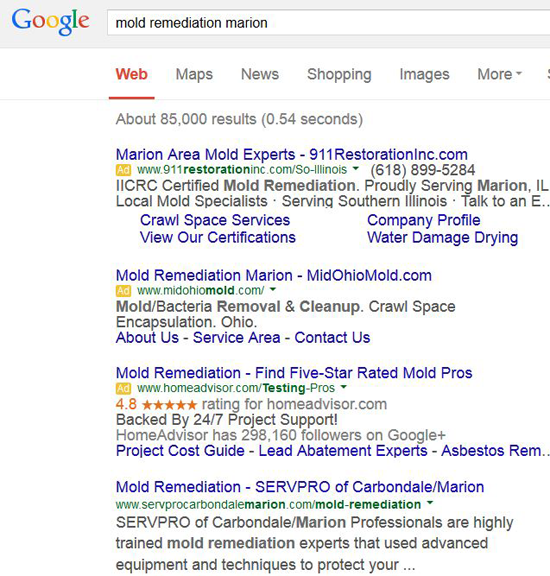Overcoming 3 Big Franchise SEO Challenges

As a franchisee you are making a significant investment in order to open a business built upon a proven business model. As a franchiser you must show potential franchisees what sets apart your company from others in the same field. SEO is a great way to drive leads to new owners in your franchise almost as soon as they open and demonstrating the ability to do this will most certainly set you apart from other similar franchises. Today we are going to talk about how to set up a search-friendly framework for your franchise so that all of your franchisees can benefit from your investment into SEO.
1. Structuring Your Website
One of the most important steps is also one of the first steps you should take when designing or revamping your website, the URL structure. Since you are building a site that needs to be capable of ranking for several locations, clear site architecture is a must. When deciding how franchisees will appear on your website you have two options:
A. Subfolders
A subfolder is anything appearing after the TLD of your website. For example www.websitemagazine.com/content. In that example content is in a subfolder. A location example would be: websitemagazine.com/san-diego. In the event that you are going to have multiple locations within a city or state, using a structure like: websitemagazine.com/California/san-diego will help in keeping your site easy to navigate while providing a clear hierarchy to search engines.
B. Sub Domains
A subdomain is a prefix preceding the primary domain of a website, for example: content.websitemagazine.com. In that example content is the subdomain. Google has mentioned before that they view subdomains as a separate URL vs. a subfolder which is part of the root domain. If you decide to use subdomains, you can follow a similar layout as with subfolders or you could mix the two. An example would be: California.websitemagazine.com/san-diego. In that example, each state could be a subdomain and each city could be in a subfolder of that sub domain.
From an SEO standpoint, you can safely use either method as long as they are properly optimized. The one major advantage of using subdomains is the ability to protect your primary domain while allowing individual franchisees to modify their location pages. Another popular strategy which is similar to using subdomains is purchasing unique domains for each location.
Using Multiple Domains
Several franchises have opted to acquire a unique domain name for each of their franchise locations. The obvious downside to this is the cost of owning several domains and hosting several websites. The benefit is that each franchisee can have their own website and if they make mistakes with their SEO it will not hurt the primary website of the franchise. While there are several examples, one company I have found to be particularly effective at this technique is Servpro. They own several domains and they use the many sites they own to rank other locations. Here is one example of that:

If you pull the link profile for this site you will see that two of the most powerful links it has come from servpro.com and servprotn.com, two other sites owned by the franchise. If you repeat the process for several other locations you can uncover a large network of Servpro sites being used to rank each other.
2. Preventing Citation Errors & Duplicates
Since the majority of franchisees need to appear in the local search results special attention needs to be placed in the setup and monitoring of citations. With numerous locations, sometimes even in the same town, it can be easy to overlook citation errors. Before launching or when refining your SEO efforts doing something as simple as creating a spreadsheet for each location can be immensely helpful, assuming that you as the franchiser will be providing SEO services to each franchisee.
Once you have a sheet setup to track citations for each location, use a citation search tool like Whitespark to find a list of existing citations for each franchise location. You will also be able to use the tool to identify competitor citations and additional citation opportunities for each location. If you are not going to provide SEO services to franchisees, you should still provide them with a basic guide for setting up and tracking citations, just be sure to explain why it is important in the materials.
3. The Battle with Duplicate Content
Regardless of how you structure URLs, duplicate content is an issue that is hurting many franchises and wholesalers as well. Uninformed business owners often copy and paste the exact information from the parent company site to their own website, resulting in massive amounts of duplicate content. As the franchiser you can prevent this issue by providing education to new franchisees or by providing them with SEO services as part of the buy-in to your franchise.
The good news is that for local SEO purposes, syndicated blog content is OK to use which will save you an enormous amount of time and money. I suggest working with your internal content team or hiring a firm to create unique and geo-specific content for each new franchisee when they join your company. Doing so will not only help them succeed, it will keep your primary site from suffering duplicate content issues. As you may know, fresh content and a regular posting schedule has been found helpful in local SEO. Set up a syndication of your company blog post to franchisee sites hosted on a separate domain or simply point locations hosted on your site back to the same blog.
Managing SEO for an entire franchise is certainly no small task. While there are several intricacies we did not cover today, the three above are some of the most common issues I see hampering SEO for franchises. If you own a franchise and do not feel like you are maximizing your online presence for your franchise and franchisees, it may be time to get an outside opinion.
Author Bio
Travis Bliffen is the founder of Stellar SEO, a Web design and marketing firm located in Marion, IL. Travis and his team are equipped to handle any size SEO project and have helped numerous businesses to date build a rock solid online presence. When you are ready for more leads and sales, it is time to get #stellarized. Connect on Facebook or Twitter @theseoproz









